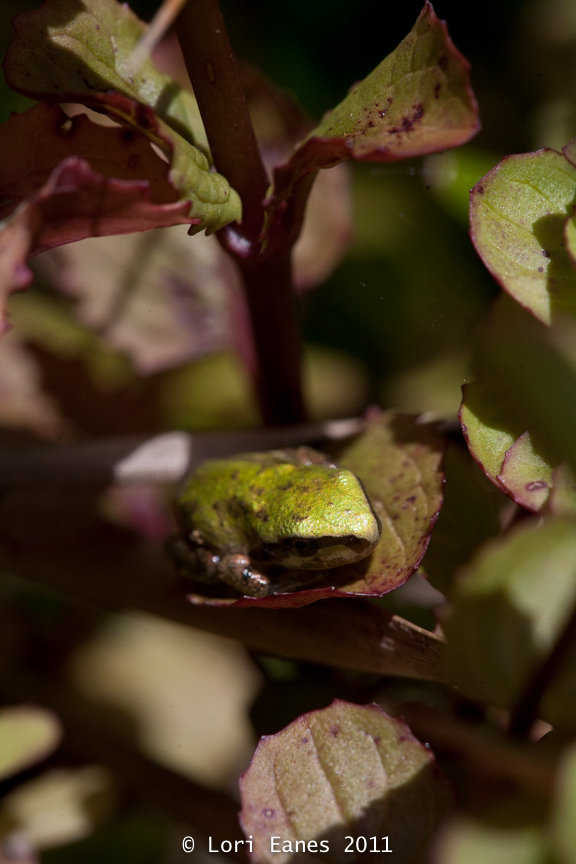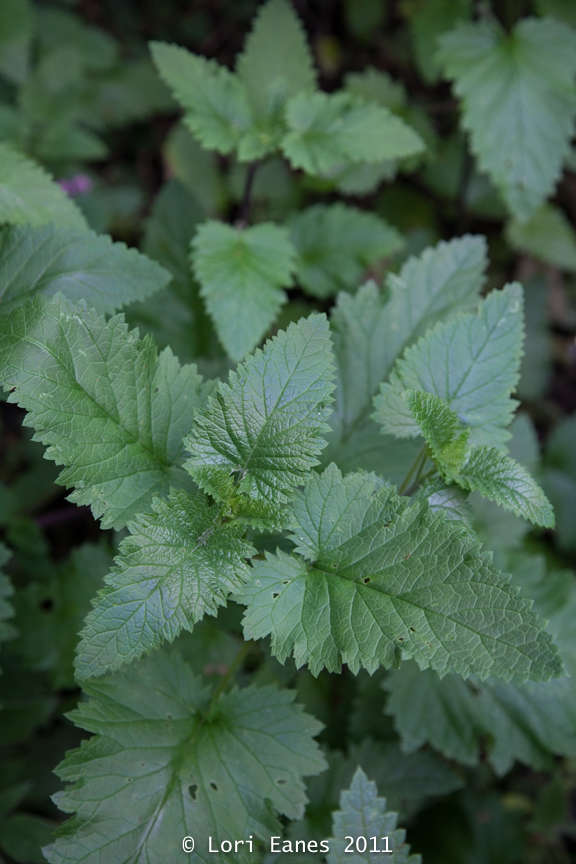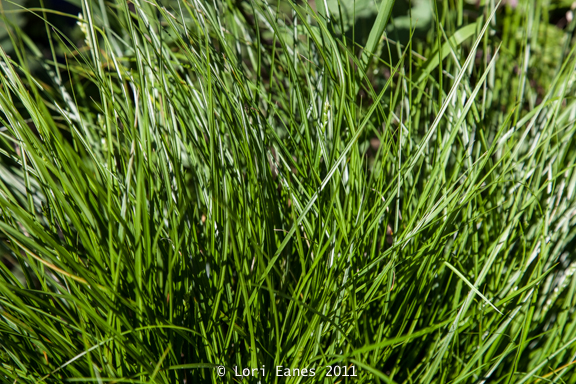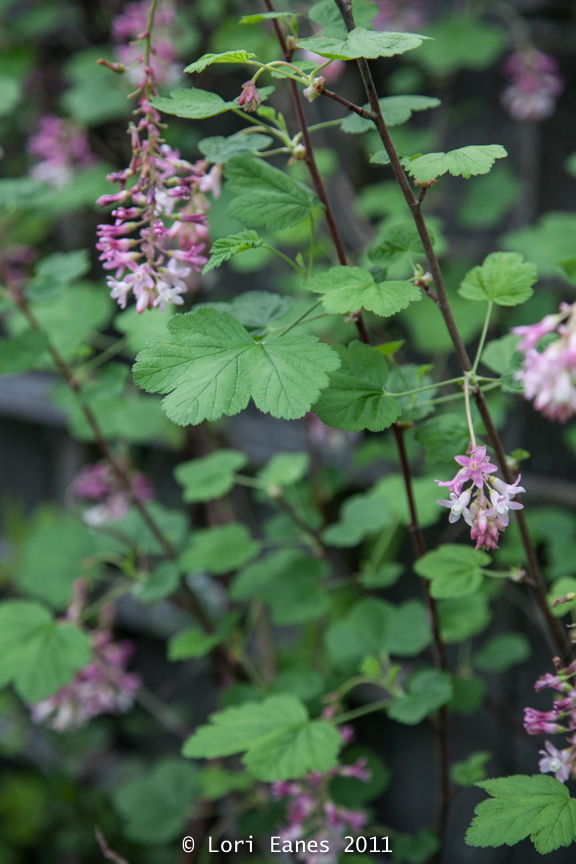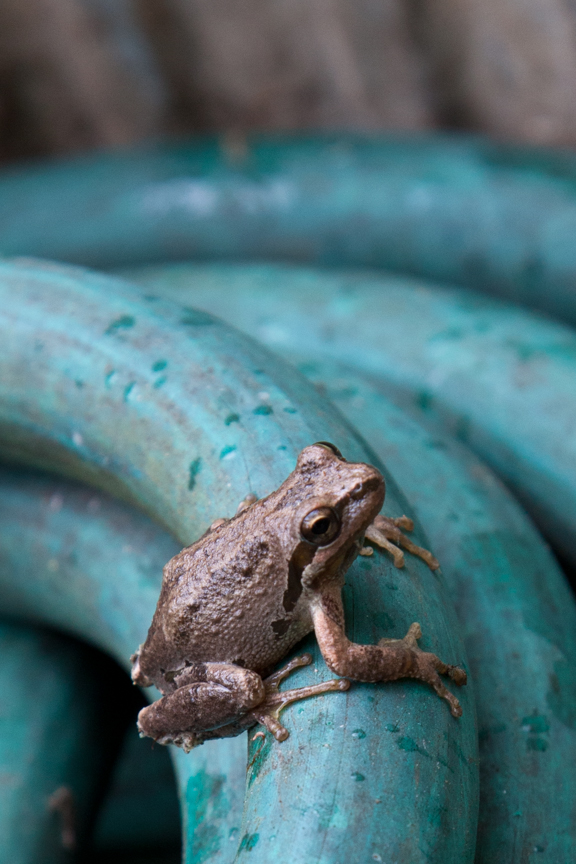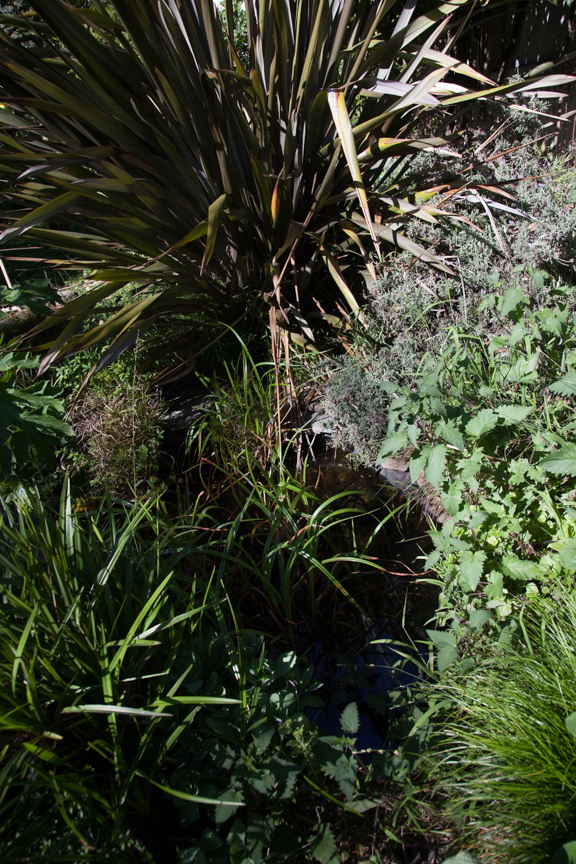
My backyard pond has gotten overgrown but this is what the frogs like best. I’d love to get rid of the big flax plant in the back (it’s not native) but the frogs hide out in it and stay safe from the marauding coons.
Last week I got a lot of interest in my backyard frog pond posting so I thought I’d elaborate with more photos and information. Having a backyard frog pond is a really a fun way to bring nature into your life. There’s nothing like the sound of frogs in the spring and who would have thought it possible to have have frogs in San Francisco? If it can happen here, it can probably happen in your backyard. It’s really not that difficult to set up, the main thing to remember is you’re creating a habitat, not just a pond.
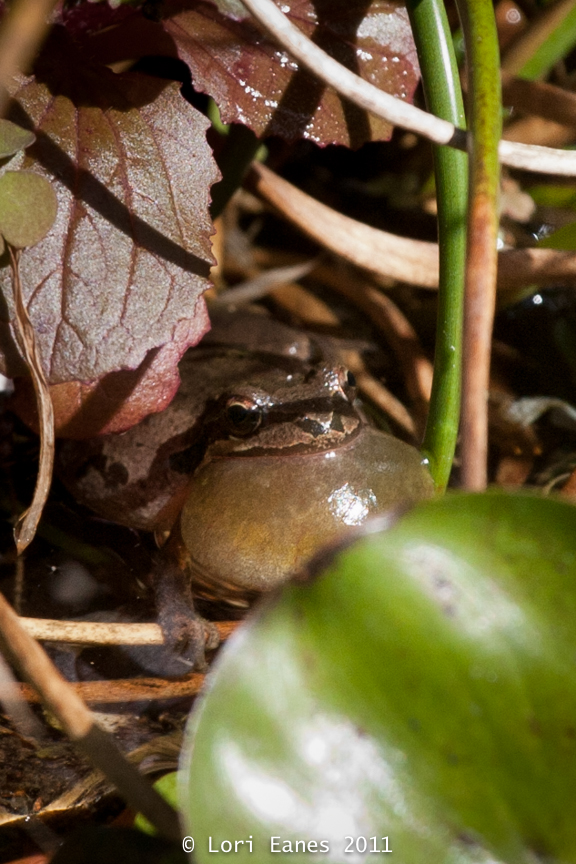
- Here’s what a Pacific Chorus frog looks like singing his heart out. As loud as they are I rarely see them, they are tiny and they like to hide.
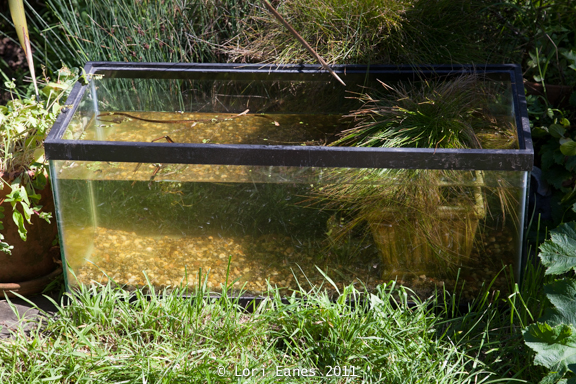
Here’s the 30 gallon aquarium that I put some of the tadpoles in every season to ensure the raccoons don’t eat them all. I have a wire cover that I secure with heavy rocks.
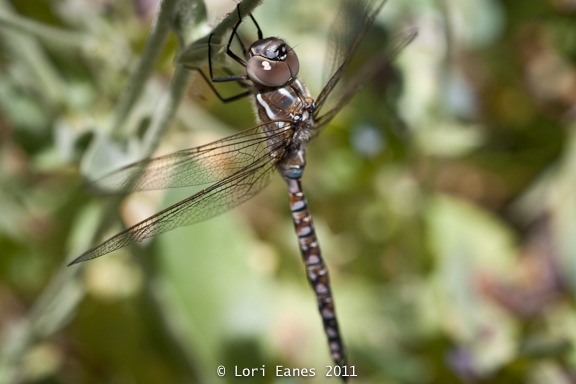
Ponds also attract dragonflies that are nice to have around. One of their favorite foods is mosquitoes.
The key to a successful habitat is providing a healthy natural environment that has everything your frogs need to survive. You may wonder why grow native plants–won’t any pond plant do? The best reason to grow natives is because they have evolved along with the local animals and are perfectly adapted to each other. They are made for your particular weather conditions, soil and seasons. Natives attract the right bugs, birds and animals that live in your area and they naturally provide them with food and shelter. They are low maintenance and require little fertilizer, pesticides, or even attention. It’s true the water loving native pond plants will need you to water them unless you have a naturally wet backyard, but they will be easier to grow and less invasive than other plants you find a nurseries. I learned the hard way to stay away from water hyacinth and duckweed, two nasty invasive plants that will choke the life out of anything else that wants to live nearby.
Here are some easy to grow natives…
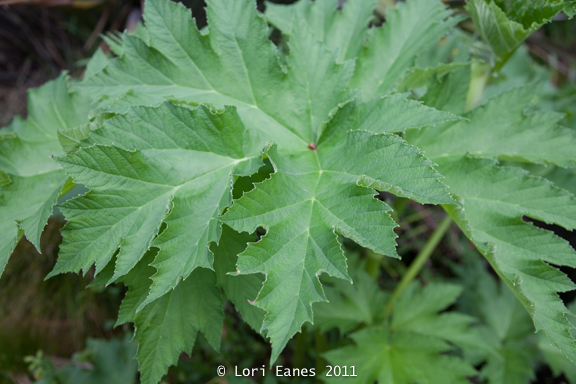
Cow Parsnip a perennial that has giant 12″ leaves and flower stalks that can get 8′ tall. It’s easy to grow and can tolerate dry or wet conditions.
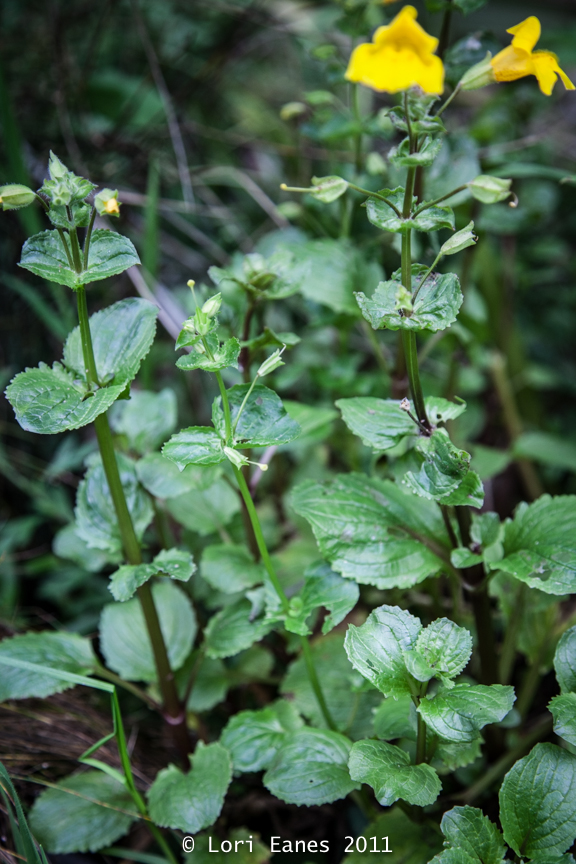
Monkeyflower (mimulmus guttatus) likes to have wet roots. I grow it in pots around the pond. It spreads easily and has yellow flowers.
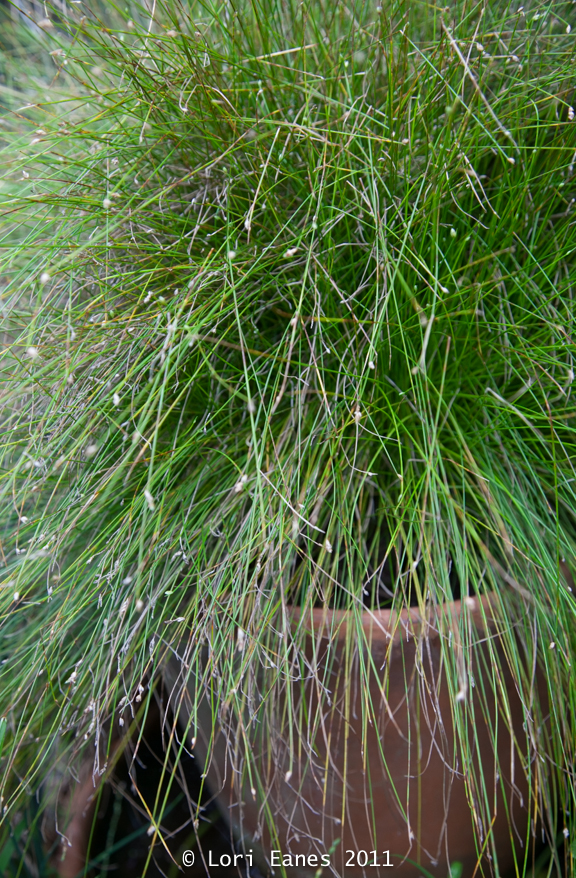
Scirpus is another native that likes to have wet roots. You can put it right in the pond or in pots around the pond.
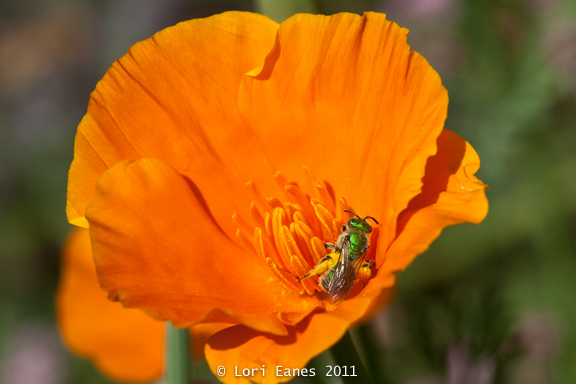
Here’s a reason to plant natives: You’ll attract crazy bugs like this native Green Sweat Bee on a California poppy.

